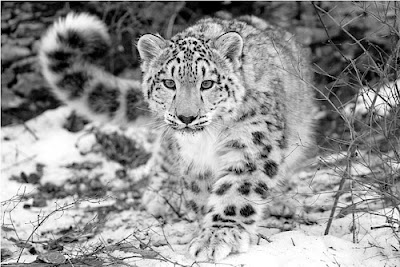The Iberian lynx also known as Spanish lynx
is a critically endangered species native to the Iberian Peninsula in
Southern Europe. It is one of the most endangered cat species in the
world. The species used to be classified as a subspecies of the Eurasian Lynx,
but is now considered a separate species. Both species occurred
together in central Europe in the Pleistocene epoch, being separated by
habitat choice. Iberian lynx resembles other species of lynx, with a
short tail, tufted ears and a ruff of fur beneath the chin.
In spite of its strong resemblance to the Eurasian Lynx,
the Iberian Lynx has a smaller body and the facial features of a house
cat. Iberian lynx typically hunts smaller animals, usually no larger
than hares. It also differs in habitat choice, with Iberian lynx
inhabiting open scrub and Eurasian lynx inhabiting forests.
The Iberian Lynx must really like rabbit because
it accounts for an amazing 80% of their diet. They also eat young deer
and duck. At one time, rabbits disappeared due to an epidemic outbreak
and the number of Iberian Lynx plummeted. This is because rabbits are
its main food. Today, development continues to destroy forest
environments and could trigger another decline in rabbits. If that
happens, it will cause irreparable damage to the already scarce
population of Iberian Lynx.
There are only a few forests in
Spain and Portugal where the remaining Iberian Lynx live, making them
one of the most critically endangered species of the Felidae family.
Forest development is one of the main reasons they have become so rare.
Their habitat has diminished and they live sporadically due to roads
and towns being built in the forest. Further damage comes from poachers
who continue to violate bans on their hunting. Source












